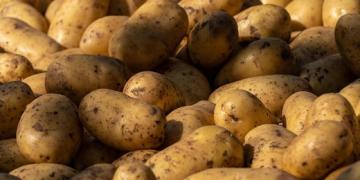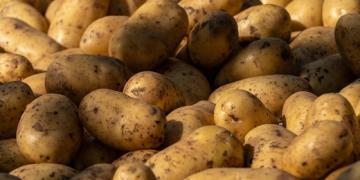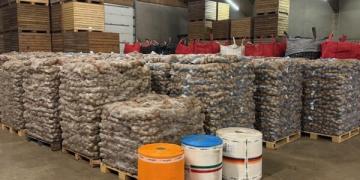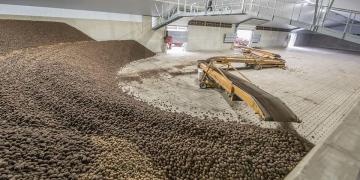Bangladesh doubled potato productivity in the last 10 years
The World Bank published a report in 2020 titled "Promoting agri-food sector transformation in Bangladesh", which provided a comparative picture of average productivity.
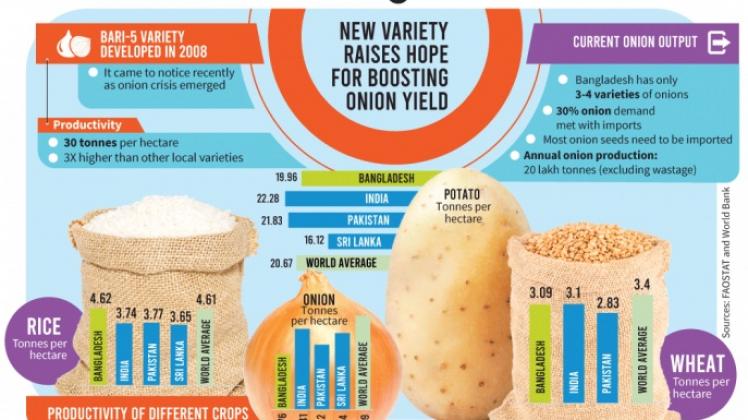
The report shows that Bangladesh is ahead of the neighbouring countries, such as, India, Pakistan, Sri Lanka, Nepal and Bhutan in rice productivity. The country is also close to the global average in potato productivity.
Md Asadullah, former director general of the Department of Agricultural Extension, said, "Currently, the productivity of rice has almost tripled due to availability of fertilisers at low costs, high quality seeds and new varieties. The government has given more importance to rice production to be self-sufficient in food."
Nur Ahamed Khondaker, assistant country representative of the Food and Agriculture Organisation of the United Nations, said, "Bangladesh is now self-sufficient in rice production. But even in the 80s, when there were 7.5 crore people, there was a shortage of 20 lakh tonnes of rice. The productivity of the new varieties has increased rice production in the country."
According to the report, the productivity of potatoes in the country is 19.96 tonnes per hectare against the global average of 20.67 tonnes per hectare.
But potato productivity is more than 50 tonnes per hectare in Belgium and the Netherlands, 48 tonnes per hectare in Turkey, more than 30 tonnes per hectare in the United States and Spain, 22.28 tonnes per hectare in India and 21.83 tonnes per hectare in Pakistan.
According to Bangladesh Bureau of Statistics, in 2020-21 FY, the production of potato was 99 lakh tonnes which is about double than that of 10 years ago.
World Bank data shows that the production of rice, potato and mango in Bangladesh has more than doubled from 1998 to 2018. But the country is lagging far behind in wheat production than the global average. The productivity of wheat in the country is 3.09 tonnes per hectare, which is 3.4 tonnes per hectare in the world.
Bangladesh tops in agricultural efficiency
According to a study by the ADB Institute, Bangladesh tops among 41 countries in Asia, including economically developed countries, such as, Japan, Korea and China in terms of agricultural efficiency.
As per a recent ADB study titled "Regional Cooperation for Improving Agriculture Production Efficiency: A strategic tool for emission reduction", the efficiency of the agricultural sector in Bangladesh is 98%. But there is an opportunity to increase productivity by 2% by increasing the efficiency of technology, fertiliser, irrigation and labour.
Malaysia, Thailand and Korea are behind Bangladesh in the list with 97% efficiency in agriculture. Nepal ranks second in South Asia and fifth in Asia with 96% efficiency. Sri Lanka stands at the third place in South Asia and ranks 13th in Asia.
The report has been prepared on the efficiency of using five things in agriculture: land, labour, capital, fertiliser and energy. Although Bangladesh is at the top in terms of land efficiency, it is at the bottom in South Asia in terms of labour efficiency.
Bangladesh ranks second in South Asia after Nepal in terms of efficiency in using capital in agriculture, while the country stands at the fifth position among the eight countries in South Asia in efficient use of fertilisers and it ranks sixth in energy use.
Dr Jahangir Alam, agricultural economist and former research director of Agricultural Research Council, said, "The main goal of the government was to provide food for the people of the country. For this, scientists are inventing many varieties of paddy and potato. It has brought our productivity to a stable place."
"Now, the government is working on the crops, which have less productivity than the demand. Productivity will increase as the government has emphasised distribution of free fertilisers and seeds, promotion of new varieties and agricultural mechanisation," he added.
According to the latest Labour Force Survey of BBS, in 2017, 40.6% of the country’s labour force or about 2.27 crore people work in the agriculture sector. In 2013, this number was 2.62 crore. The number of workers in agriculture decreased by 15 lakh in a few years due to a lack of efficiency.
Fuente: tbsnews.net

